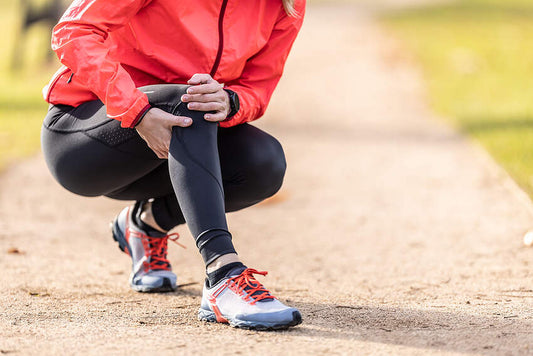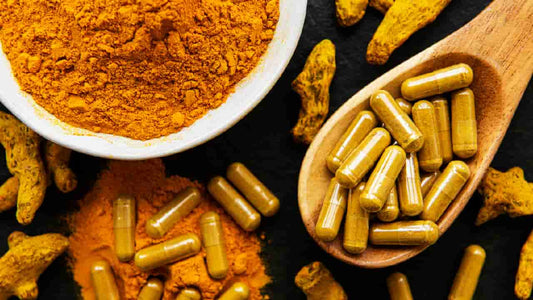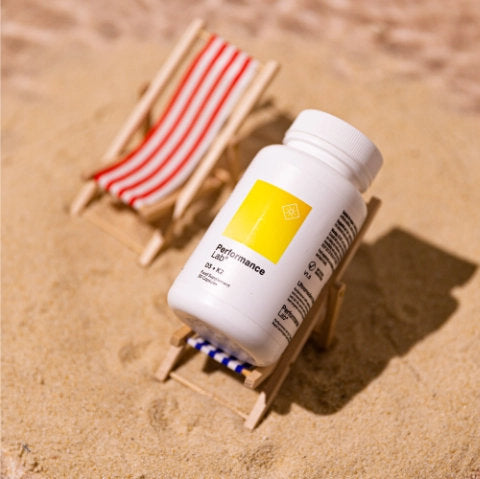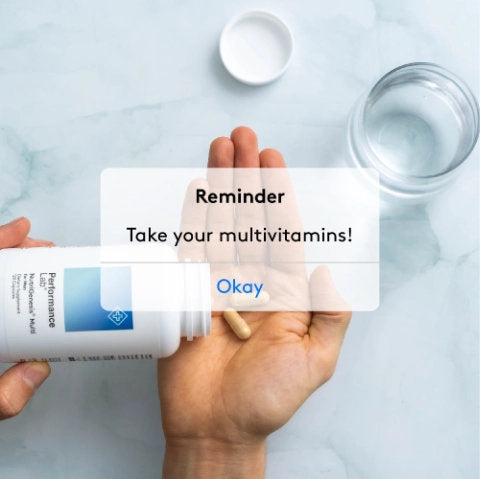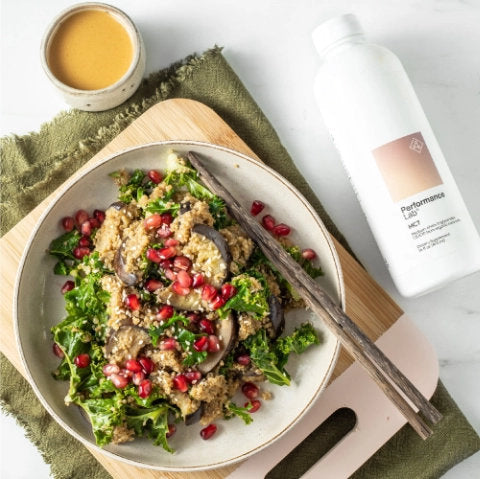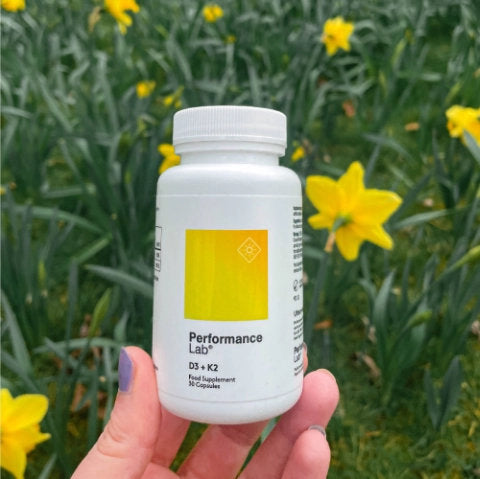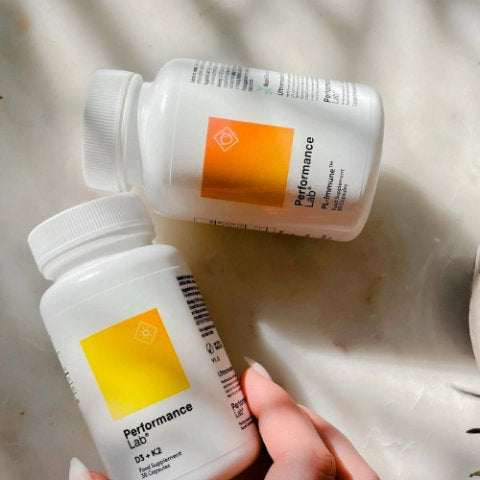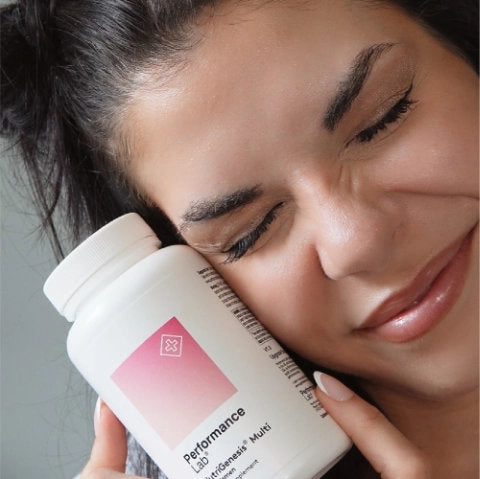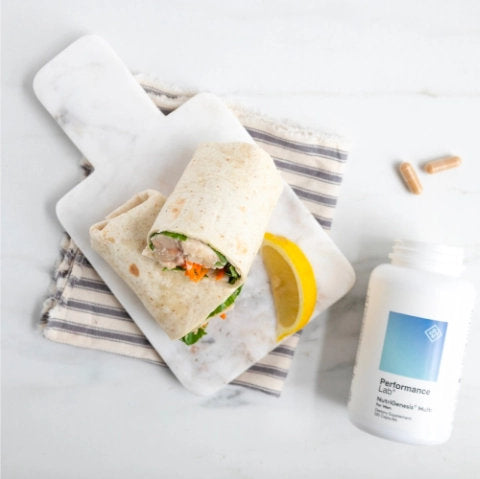You exercise, you get sore joints.
And if you don’t exercise, you get sore joints.
It’s a Kierkegaardian proposition: you exercise or you don’t exercise, either way you get sore joints. So, you may as well exercise, right?
That’s all perhaps a bit oversimplistic.
Of course, the type of exercise certainly matters when it comes to joint pain, as well as the frequency and intensity of exercise...
For example, high-intensity daily bodybuilding often leads to joint pain due to the inherent stress on joints that comes with increasing muscle mass.
After all, it’s tough on the joints to pull around all those gains.
Likewise, the repetitive motions and shocks involved in sports like, say, tennis or long-distance running also present a significant amount of wear-and-tear on the joints.
For both skilled endurance athletes and anaerobic bodybuilders, joint pain can significantly disrupt a consistent fitness routine, not to mention competitive performance.
While exercise-related joint pain is generally preferable over non-exercise-related joint pain (i.e., hip pain from sitting all day), it’s certainly much less preferable to no joint pain at all.
And, yes, there is way to mitigate joint pain without necessarily having to compromise the intensity and/or frequency of your workouts.
In this article, we cover the athletic advantages of maintaining healthy joints with natural joint-support ingredients, including a breakdown of the best joint supplement.
But before we dive into all of that, let’s first address the basics on exercise and joints.
The Link Between Exercise and Joint Health
For athletes, there’s “good” pain and there’s “bad” pain.
Muscle burn, soreness, fatigue—all of these uncomfortable consequences of exercise are all necessary to boosting your strength and muscle mass.
If you’re looking to lose weight, you’ll need to crank up the exercise intensity enough to quite literally feel the burn of fat loss.
In the long run, this sort of pain feels good and even helps ward off more serious aches that we’d otherwise refer to as “bad” pain.
However, with exception to first-time exercisers, almost never is joint pain considered “good.” Joint pain is virtually always “bad” pain.
Whereas muscle soreness can be viewed as necessary to muscle growth, especially for first-time exercisers, joint soreness is typically viewed as an adverse side effect of:
- Excess Inflammation – too much exercise-related stress on tendons, ligaments, etc. often contributes to excess inflammation in joints, resulting in painful joint stiffness and limited range of motion.
- Poor Form or Posture – much of what’s considered “good form” in weightlifting is designed to not only maximize strength and performance but to prevent the weight-load from concentrating in the joints.
- Rapid Muscle Growth – increasing muscle mass in a short amount of time can be taxing on joint connective tissues; Osgood-Schlatter disease (OSD), the painful inflammation of the knee associated with a child’s growth spurt, is a common example of this.
- Poor Sports Nutrition – many micronutrients (vitamins and minerals) associated with bone health also play a role in the integrity and longevity of connective tissues, such as tendons, ligaments, and cartilage.
Much of exercise-related joint pain is attributed to exercise-related inflammation.
For example, tendinitis of the patellar tendon (the “kneecap tendon”) is often associated with squat-heavy exercise that places a lot of stress on the knee-proximal muscle groups, resulting in knee pain that spikes with squat-like activities, such as climbing a flight of stairs or standing up from a chair.
However, speaking of chairs, a sedentary lifestyle totally absent of exercise or daily activity may also contribute to long-lasting joint pain.
The Flipside: Inactivity Also Contributes to Joint Pain
Almost never is joint pain “good” pain. Likewise, almost never is any pain “good” pain when you can’t link it to exercise or any intense physical activity.
Exercise, as a form of physical stress, works as a sort of “stress test” on the body. Because exercise is stressful, the body has to become gradually acclimated to exercise before you can expect any stellar results on your max bench-press, mile run, sprint time, etc., etc.
In the total absence of exercise, or moderate physical stress, the body acclimates to inactivity and weakens.
Basic daily motions can “overstress” a body weakened by inactivity, resulting in easily inflamed joints and connective tissues.
In fact, research suggests that muscle wasting (muscle loss due to lack of physical activity or nutrition) is a significant risk factor in developing osteoarthritis (OA).
This is why some exercise is essential to support ongoing joint health and fitness.
With that in mind, it’s better to deal with exercise-related joint pain as opposed to inactivity-related joint pain.
How to Soothe Sore Joints After Exercise
High-intensity exercise hurts. But it shouldn’t hurt so much that you’re unable to work out with the same intensity the following day.
This is why taking care of your joints is key to sustaining a long-term exercise regimen, as well as your overall quality of life.
Some of the best strategies to soothe sore joints after exercise include:
- Stretch and Massage – both before and after exercise, stretching and massaging can help relieve stiffness and excess stress on the joints for a more even distribution of weight-load across the body.
- Ice – aside from providing acute pain relief, icing your joints and sore muscles can help combat inflammation and swelling.
- Limit Exercise – for example, if your lower joints are sore, taking time off lower extremity exercises can help give your joints some time to repair.
- Stay Active – limiting exercise doesn’t mean abstaining from exercise altogether; so, rather, stay moving to keep your circulation up and stiffness at bay.
- Rest and Recovery – in addition to promoting muscle growth and repair, a good night’s rest is also key to joint health and fitness.
Learn about the best sleep and recovery supplement for muscle growth and repair.
Another key aspect of joint health is taking joint-support supplements.
Even if you don’t require immediate sore joint soothing, taking an effective joint-support supplement can help raise your body’s natural resistance to the gradual wear-and-tear of joint connective tissues.
The Exercise Benefits of Healthy Joints
Everything hinges on the joints. (No pun intended.)
Though much of athletic skill and strength relies on practice and consistent conditioning, it’s much, much more difficult to perform even simple athletic tasks when operating with sore, inflamed connective tissues.
With that in mind, supporting healthy joints with adequate rest and repair, as well as with natural joint support supplements, can help improve:
- Flexibility
- Range of Motion
- Ease of Motion
- Joint Resilience
- Shock Absorption
- Endurance and Longevity
- Tendon and Ligament Strength
For bodybuilders, this may mean counterbalancing the joint-straining effects of increased muscle mass, whereas, for competitive athletes, this means lowering the joint-related physical barriers to reaction time, stamina, and other skill measures of performance.
Getting adequate rest and recovery is key to sustaining an effective exercise routine.
And one of the best ways to specially target joint repair and recovery is to add an all-natural joint supplement to your daily routine.
Best Ingredients for Sore Joints
Some supplement ingredients may work better than others at mitigating joint pain.
However, no one single ingredient may completely address all your joint health issues, which is why it’s best to take a stack of multiple joint support ingredients for complete, comprehensive joint coverage.
In no particular order, the best ingredients for sore joints include:
Glucosamine Sulfate 2KCl
An amino sugar naturally concentrated in the connective tissues that comprise, cushion, and support the joint, glucosamine is one of the most popular ingredients for joint health and flexibility.
Glucosamine supports joint health by promoting:
- Protein building-blocks used to form connective tissues
- Chondrocyte cells that repair and develop cartilage
- Synovial fluid for smooth, well-lubricated range of movement
Especially when paired with chondroitin sulfate (see below), glucosamine sulfate 2KCl helps maintain a healthy cartilage cushion and well-lubricated joints, providing essential joint-nourishment that both soothes and protects joints against the wear-and-tear of exercise and aging.
Which is Better: Glucosamine HCl vs. Glucosamine Sulfate?
Though most types of glucosamine supplements may assist with joint health and flexibility, not all glucosamine types are equal.
Of the three most common types (glucosamine HCl, N-acetyl glucosamine, and glucosamine sulfate), glucosamine sulfate is the best for providing an additional supply of sulfate, which is required for the production of cartilage.
More on Benefits of Glucosamine Sulfate.
Chondroitin Sulfate
Often paired with glucosamine sulfate, chondroitin sulfate is a complex of large molecules that help build proteoglycans, the proteins largely responsible for making cartilage cushiony and comfy.
Chondroitin weaves through the extracellular matrix of cartilage, where it attracts and holds water to keep your cartilage well-hydrated.
Supplementing chondroitin helps joints by keeping cartilage shock-absorbent, supporting healthy collagen production, and blocking cartilage-diminishing enzymes such as cyclooxygenase (COX)-2, microsomal prostaglandin synthase (mPGES)-1.
Research suggests that chondroitin works by simultaneously stimulating the anabolic (building) process of cartilage metabolism and delaying many inflammation-induced catabolic (breakdown) processes in cartilage.
Best Chondroitin for Sore Joints: Phytodroitin™
Phytodroitin™ is a plant-based alternative to chondroitin, derived from seaweed extracts. Traditional chondroitin is often sourced from animal products like shark cartilage, pork byproducts, or bovine connective tissue. Phytodroitin™ offers a safe and sustainable substitute, free from controversial origins.
Turmeric
A legendary spice of the Ayurvedic health tradition, turmeric is often valued as a cognitive preserver, thanks to its brain healthy plant pigments called curcuminoids.
Yet, these bioactive compounds also possess joint protective properties, thanks to curcumin, the primary curcuminoid.
Curcumin seems to benefit joint health by regulating:
- Joint-destructive oxidative stress (free radicals)
- Cartilage-degrading COX-2 enzyme
- Destructive matrix metalloproteinase (MMP) enzymes
The combined bio-benefits of turmeric result in improvements in joint stiffness, overall comfort, and functional performance.
Best Turmeric for Sore Joints: CurcuWIN®
Despite its status as a superfood, turmeric is a difficult supplement due to this herb’s poor oral bioavailability.
CurcuWIN® helps overcome turmeric’s poor potency with a 20% standardized curcumin extract bio-engineered to make its curcuminoids 46X more absorbable than that of standard turmeric powder.
Methylsulfonylmethane (MSM)
A smart ingredient to stack with glucosamine and chondroitin, organic sulfur methylsulfonylmethane (MSM) is a key building-block structural unit required to develop and maintain collagen, glucosamine, chondroitin, and other joint-focused compounds that comprise cartilage and other connective tissues.
Supplemented regularly, MSM can help slow the breakdown of cartilage, protecting against grinding bone-on-bone discomfort for greater joint fitness and longevity.
Best MSM for Sore Joints: OptiMSM®
The purest and only GRAS-designated (Generally Regarded as Safe) MSM, OptiMSM® is a USA-made MSM manufactured with a proprietary multi-stage distillation process that yields superior purity, quality, and consistency than standard MSM.
Our Recommended Supplement for Sore Joints: Performance Lab® Flex

Combining all the best flex-supportive ingredients in a single, comprehensive formula, Performance Lab® Flex is an ultramodern joint stack for the ultramodern exerciser.
Whereas many old-school joint supplements focus primarily on age-related joint issues, supplying a limited range of unclean, shellfish-based ingredients, Performance Lab® Flex focuses on both exercise- and age-related joint pain with a stack of all-natural, vegan-friendly ingredients backed by clinical research and sports nutrition science.
Get the Best Deal on Performance Lab® Flex Here
The advantages of Performance Lab® Flex far exceed standard flex support to provide a wide range of joint health and fitness benefits, including:
Key Benefits
- Comfort – by combating excess inflammation and harmful enzymes, Flex helps soothe joint aches and stiffness.
- Protection – Flex protects against cartilage-damaging enzymes and oxidative stress for greater joint longevity.
- Lubrication – by protecting and replenishing healthy synovial fluid activity, Flex promotes smooth joint movement and flexibility.
- Bone Strength – Flex enhances connective tissue integrity and bone mineral density for joint-end integrity.
- Shock Absorption – Flex supports thick, well-hydrated cartilage, keeping it thick, springy, and healthy for optimal shock absorption.
- Resilience – Flex nourishes cartilage, tendons, and ligaments for limber function and more efficient joint recovery.
Get the Best Deal on Performance Lab® Flex Here
Though simple in function, joints are anatomically complex, involving various overlapping connective tissues and bone-on-bone movements.
While some ingredients may individually improve particular aspects of joint health and fitness, it requires a complex of joint-supportive ingredients to comprehensively get the job done.
With a smart stack of all-natural botanicals and plant compounds, Performance Lab® Flex targets multiple joint bio-pathways for all-around greater flexibility, performance, and athletic longevity.
Key Features
In addition to being the most effective and comprehensive joint support supplement on the market, Performance Lab® Flex is also the cleanest.
Many joint support supplements source their ingredients from shellfish and other risky animal sources, making joint support options not only inaccessible to vegans but generally unclean and unnecessarily full of junk additives.
Not so with Performance Lab® Flex.
Some key highlights of this formula:
- 100% Natural – all ingredients come from natural sources
- Plant-Based – no shellfish or other animal sources
- Clean Additives – no synthetics, artificial colors, gut-damaging sweeteners, etc.
Not to mention that Performance Lab® Flex encapsulates its all-natural formula in all-natural NutriCaps®, a patented capsule constructed out of fermented tapioca (pullulan) and infused with gut-healthy prebiotic properties.
Inside and out, Performance Lab® Flex is the cleanest, safest, and most effective joint support supplement you can buy. Safe for daily, long-term use.
Supplement Facts: CurcuWIN® Turmeric (20% Curcuminoids), AprèsFlex® Boswellia serrata (20% 3-0-acetyl-11-keto-β-boswellic acid ), Glucosamine Sulfate 2KCL, Mythocondro® Chondroitin Sulfate, OptiMSM® Methylsulfonylmethane.
Summary
Exercise contributes to joint pain. Likewise, inactivity, or a lack of exercise, may also contribute to joint pain. And, regardless of exercise and inactivity, the universal process of aging also does a significant amount of damage on the joints—and, really, all parts of the body.
This is why virtually everyone has to eventually reckon with joint pain.
For athletes and exercisers in particular, however, joint pain can be especially frustrating, as it both occurs as a result of high-intensity training and disrupts a consistent high-intensity training regimen. This is particularly troublesome for competing athletes who often lack the time for adequate joint recovery and tissue repair.
This is where Performance Lab® Flex comes into play.
By supplying a rich complex of joint-supportive botanicals and compounds, Performance Lab® Flex provides the raw material for joint reparation while also protecting against harmful enzymes and oxidative stress associated with high-intensity exercise and aging.
Taken daily and consistently, Performance Lab® Flex may help soothe achy joints while protecting against future aches and pains, promoting greater exercise performance and athletic longevity.
References
- Kidd BL et al. Arthritis and pain. Current approaches in the treatment of arthritic pain. Arthritis Res Ther. 2007; 9(3): 214.
- Hartmann H et al. Analysis of the load on the knee joint and vertebral column with changes in squatting depth and weight load. Sports Med. 2013 Oct; 43(10): 993-1008.
- Vaishya R et al. Apophysitis of the Tibial Tuberosity (Osgood-Schlatter Disease): A Review. Cureus. 2016 Sep; 8(9): e780.
- Shorter E et al. Skeletal Muscle Wasting and Its Relationship With Osteoarthritis: a Mini-Review of Mechanisms and Current Interventions. Curr Rheumatol Rep. 2019; 21(8): 40.
- Ogata T et al. Effects of glucosamine in patients with osteoarthritis of the knee: a systematic review and meta-analysis. Clin Rheumatol. 2018; 37(9): 2479-2487.
- Zhu X et al. Effectiveness and safety of glucosamine and chondroitin for the treatment of osteoarthritis: a meta-analysis of randomized controlled trials. J Orthop Surg Res. 2018; 13: 170.
- Henrotin Y et al. Chondroitin Sulfate in the Treatment of Osteoarthritis: From in Vitro Studies to Clinical Recommendations. Ther Adv Musculoskelet Dis. 2010 Dec; 2(6): 335-348.
- Jerosch J. Effects of Glucosamine and Chondroitin Sulfate on Cartilage Metabolism in OA: Outlook on Other Nutrient Partners Especially Omega-3 Fatty Acids. Int J Rheumatol. 2011; 2011: 969012.
- Hewlings SJ, Kalman DS. Curcumin: A Review of Its’ Effects on Human Health. Foods. 2017 Oct; 6(10): 92.
- Daily JW et al. Efficacy of Turmeric Extracts and Curcumin for Alleviating the Symptoms of Joint Arthritis: A Systematic Review and Meta-Analysis of Randomized Clinical Trials. J Med Food. 2016 Aug 1; 19(8): 717-729.
- Siddiqui MZ. Boswellia Serrata, A Potential Antiinflammatory Agent: An Overview. Indian J Pharm Sci. 2011 May-Jun; 73(3): 255-261.
- Kimmatkar N et al. Efficacy and tolerability of Boswelli serrata extract in treatment of osteoarthritis of knee—a randomized double blind placebo controlled trial. Phytomedicine. 2003 Jan; 10(1): 3-7.
- Xu G et al. Evaluation of the Effect of Mega MSM on Improving Joint Function in Populations Experiencing Joint Degeneration. Int J Biomed Sci. 2015 Jun; 54-60.



